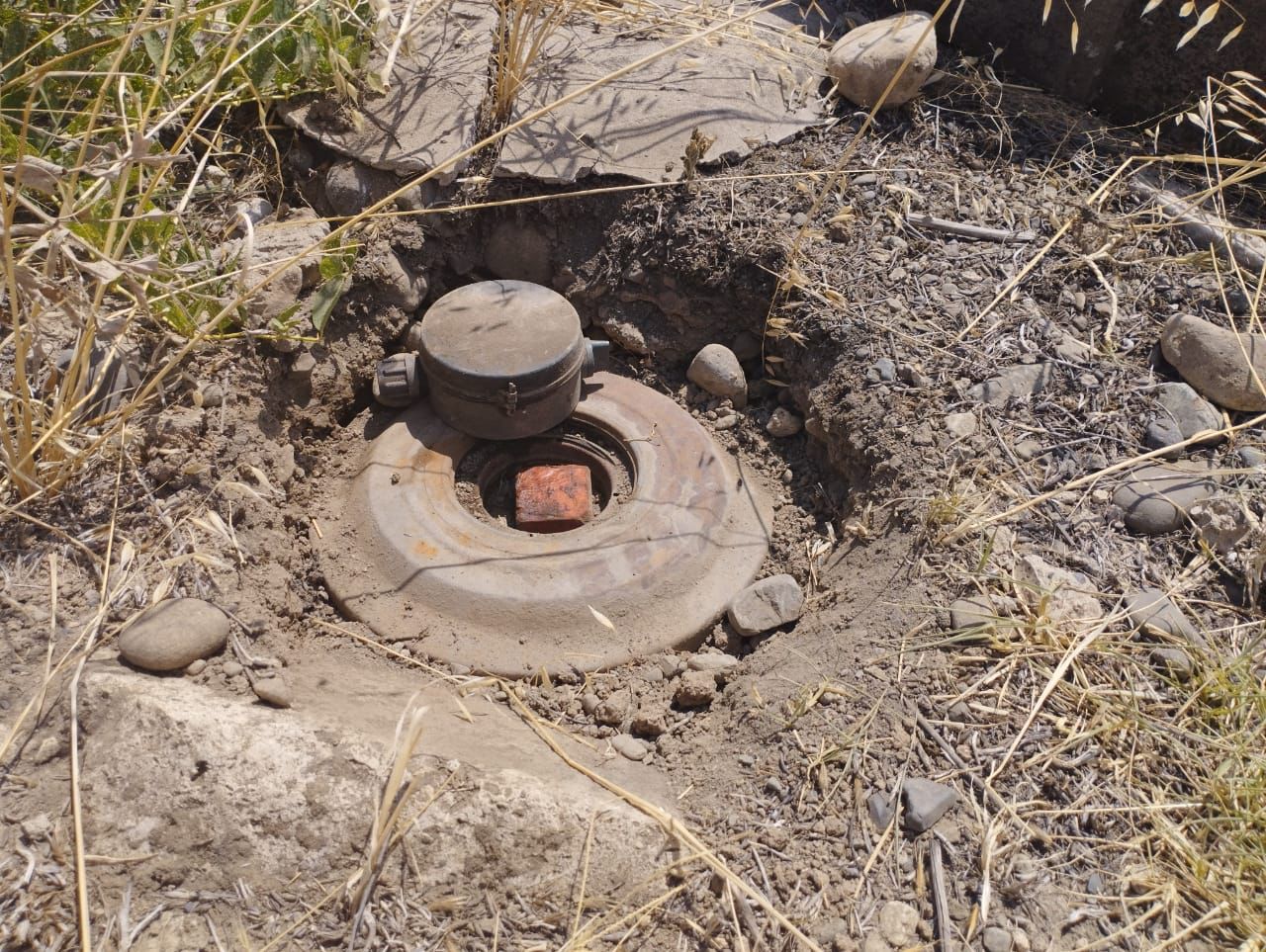The Foreign Ministry of Azerbaijan highlighted in a statement on Friday the ongoing mine threat in the territories liberated from Armenian occupation in 2020.
The statement was in response to recent information from the Armenian National Security Service regarding a potential delivery of additional landmine maps to Azerbaijan as part of confidence-building measures.
According to the ministry, Azerbaijan is encountering significant challenges in clearing the liberated territories of landmines due to Armenia’s extensive mine planting and intentional withholding of maps indicating the locations of the explosives.
“It is well-known that the accuracy of landmine maps, the existence of which was denied by Armenia following the signing of the Trilateral Statement dated 10 November 2020, but later was submitted as a result of international pressure, is only 25%. We have frequently pointed out that the provided maps are ineffective, incomplete, and do not accurately portray the reality on the ground. Although these maps show that only 400 thousand landmines were reportedly deployed in our territories, the actual number of landmines surpasses one million,” the ministry stated.
Azerbaijan obtained minefield maps for the once-occupied Aghdam, Fuzuli, and Zangilan districts, as well as other liberated territories from Armenia following the 2020 war. In Aghdam, 97,000 explosives have been planted, while in Fuzuli and Zangilan, the number stood at 92,000, according to the obtained maps. The Azerbaijan National Agency for Mine Action (ANAMA) reported that the maps provided by Armenia were only 2 percent effective in mine action.
The Foreign Ministry revealed that more than 55% of landmine explosions in recent years occurred in locations outside the areas shown in the maps provided by Armenia.
“We remind that 342 of our fellow citizens have become landmine victims since the end of the Patriotic War in 2020, with 65 individuals killed, including three journalists. Out of 65 dead, 50 were civilians,” the ministry noted.
The ministry also rejected the Armenian authorities’ denial of producing and deploying new landmines in Azerbaijani territories, stating that 500,000 new landmines manufactured in Armenia have been planted within and along the perimeters of the territory of Azerbaijan temporarily monitored by Russian peacekeepers.
“Azerbaijan expects Armenia to submit accurate maps of all land-mined sites that have not yet been fully presented to Azerbaijan,” the ministry concluded.
The Karabakh (Garabagh) and East Zangazur regions of Azerbaijan have been extensively mined since the 1990s by Armenian armed forces. Following the Soviet Union’s dissolution in 1991, Armenia launched a full-scale military assault against Azerbaijan. The bloody war lasted until a ceasefire was reached in 1994 and saw Armenia occupying 20 percent of Azerbaijan’s internationally recognized territories. Over 30,000 Azerbaijanis were killed, nearly 4,000 went missing, and one million were expelled from those lands in a brutal ethnic cleansing campaign conducted by Armenia.
On September 27, 2020, the longstanding conflict reignited when Armenia’s forces, stationed illegally in occupied Azerbaijani lands, attacked military positions and civilian settlements of Azerbaijan. In a 44-day counter-attack, Azerbaijani forces liberated more than 300 settlements, including the cities of Jabrayil, Fuzuli, Zangilan, Gubadli, and Shusha, from Armenian occupation. The war concluded on November 10, 2020, with a tripartite statement signed by Armenia, Azerbaijan, and Russia. Under this agreement, Armenia returned the occupied Aghdam, Kalbajar, and Lachin districts to Azerbaijan.
Since the cessation of hostilities, the Azerbaijani government has been actively engaged in demining operations in the liberated territories to facilitate the return of internally displaced people to their homes. Despite significant efforts, these operations encountered challenges due to Armenia’s refusal to provide maps indicating the locations of landmines.
In November 2022, the Azerbaijani Defense Ministry discovered a substantial minefield in the Lachin district, laid by illegal Armenian armed detachments after the 2020 war. The ministry confirmed the discovery and defusal of 350 PMN-E anti-personnel mines, manufactured in Armenia.
The persistent threat of landmines poses the significant obstacle to the repopulation of the liberated Azerbaijani lands. According to Azerbaijani government data, international experts estimate that it will take nearly 30 years and $25 billion to address demining-related issues.







 Azerbaijan and Armenia started the process of demarcation of their border on Tuesday, with the installation of the first border markers based on ge...
Azerbaijan and Armenia started the process of demarcation of their border on Tuesday, with the installation of the first border markers based on ge...
 Armenian sappers commenced on Monday mine-clearance operations in the territories adjacent to the Saint Mary Church in village of Voskepar (Armenia...
Armenian sappers commenced on Monday mine-clearance operations in the territories adjacent to the Saint Mary Church in village of Voskepar (Armenia...
 Iran and Pakistan have signed eight cooperation documents in various fields, and agreed to strengthen ties to fight terrorism in the region.
Iran and Pakistan have signed eight cooperation documents in various fields, and agreed to strengthen ties to fight terrorism in the region.
 President Aliyev emphasized the critical role of the North-South Transport Corridor in fostering transport cooperation between Azerbaijan and Russi...
President Aliyev emphasized the critical role of the North-South Transport Corridor in fostering transport cooperation between Azerbaijan and Russi...



